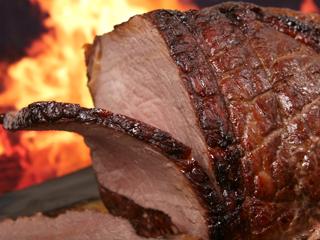Zinc - essential for health
Published on 6 January 2011 in Food, health and wellbeing

Introduction
When browsing the supermarket shelves, it is rare to find any information about the zinc content of foods. This may in part indicate a poor public awareness and understanding of the essential role that zinc plays in keeping us alive and healthy. Interpretation of zinc nutritional information by the public would therefore be difficult. In contrast, nutrition professionals and regulators well appreciate the essentiality of zinc but recent advances in understanding the roles of zinc at a cellular and molecular level have changed the established perception of zinc as a passive protein-binding metal to an active trigger for initiating molecular changes within cells. This process is known as zinc signaling and is analogous in many ways to calcium signaling. The realization that zinc signals within cells has opened up a challenging and rapidly expanding field of research that has transformed our understanding of how low zinc status in sectors of the human population may be chronically harmful even in developed countries such as Scotland and the UK.
A 60 kilogram adult human contains about 2 grams of zinc distributed mostly in muscle and bone but also in soft tissues such as liver. Zinc present in consumed food is absorbed, passes through the gut cells into the blood and is bound to a transport protein which takes it to the liver and other tissues. It then passes into the cells and is incorporated into proteins to perform structural and enzymatic functions. In a structural role, zinc atoms are like staples on a ribbon: they hold the long protein molecules in a particular shape which allows them to fulfill their function. Some proteins, known as enzymes, convert biochemicals from one form to another and zinc is a co-factor in the active site of over 300 different enzymes. For example, alcohol dehydrogenase, a zinc requiring enzyme, breaks down consumed alcohol, with a consequent return to sobriety!
Major sources of dietary zinc include red meat and some shellfish, but other sources include white meat, fish, cheese, cereals and legumes. Poor sources are vegetables and fruit and this raises a paradox in current nutritional advice which advocates reducing meat intake and increasing fruit and vegetable consumption. The range of zinc intakes within the UK is 3-15 mg/day. Once absorbed, zinc that ends up in bone or muscle is slowly metabolized whereas mobile zinc in blood and soft tissues, constituting around 10% of total body zinc, is quickly metabolized (mobile zinc). Within cells, very little zinc is in a free, unbound form (about one atom in more than a million), but this tiny amount of free zinc has a disproportionately large influence on cell signaling. Small changes in mobile zinc and therefore the levels of free zinc in cells may be picked up and amplified like an electric guitar signal on a power amplifier, which can result in abnormal cellular function or even toxicity in excess.
Mobile zinc and cellular zinc homeostasis are therefore kept under close regulation and are maintained across a range of dietary zinc intakes. However, below about 6 mg zinc per day (over 15% of the Scottish population), the mobile and cellular free zinc may be depleted. Since free zinc regulates expression of proteins which protect against oxidative and inflammatory stress, we can predict that low zinc status will reduce the capacity of the vascular system, for example, to resist the oxidative and inflammatory processes that cause atherosclerosis and ultimately heart attacks.
Key Points
- Zinc is not only a structural component of proteins and a co-factor for enzymes, but it has a cell signaling function which regulates cellular resistance to oxidative and inflammatory stress.
- Good sources of dietary zinc include red meat and poor sources are vegetables and fruit. This raises a paradox in current nutritional advice which advocates reducing meat intake and increasing fruit and vegetable consumption.
- Zinc homeostasis is well maintained at normal zinc intakes but a significant sector of the Scottish population, including children, adolescents and the elderly, particularly in deprived communities, are at risk of low zinc status.
- Recent evidence suggests that the antioxidant and anti-inflammatory roles of zinc may promote vascular health, and that low zinc status may accelerate vascular inflammation and atherosclerosis.
- There are no good biomarkers of zinc status and so the relationship between zinc status and vascular disease has not been studied.
Research Undertaken
The objective of our research has been to demonstrate how adequate zinc status maintains vascular health and protects against vascular disease. The emphasis has been on prevention, which involves an understanding of the zinc regulated molecular and cellular mechanisms that influence the transition from healthy to diseased blood vessels. We have also studied disease outcome in terms of vascular lesions. In addition, we are developing human biomarkers of zinc status (www.abdn.ac.uk/rowett.ac.uk/zinc) that will help us to look for epidemiological links between zinc status and vascular disease incidence.
Results thus far demonstrate that low zinc status promotes vascular inflammation and atherosclerosis. Maintenance of vascular smooth muscle cell function appears to be affected and on-going studies are investigating the role of zinc in smooth muscle cell proliferation/differentiation and the calcification of atherosclerotic plaque, the fatty deposits in blood vessels that ultimately cause a heart attack.
Policy Implications
Good sources of dietary zinc include red meat and poor sources are vegetables and fruit. This raises a paradox in current nutritional advice which advocates reducing meat intake and increasing fruit and vegetable consumption.
Author
Professor John Beattie J.Beattie@abdn.ac.uk







